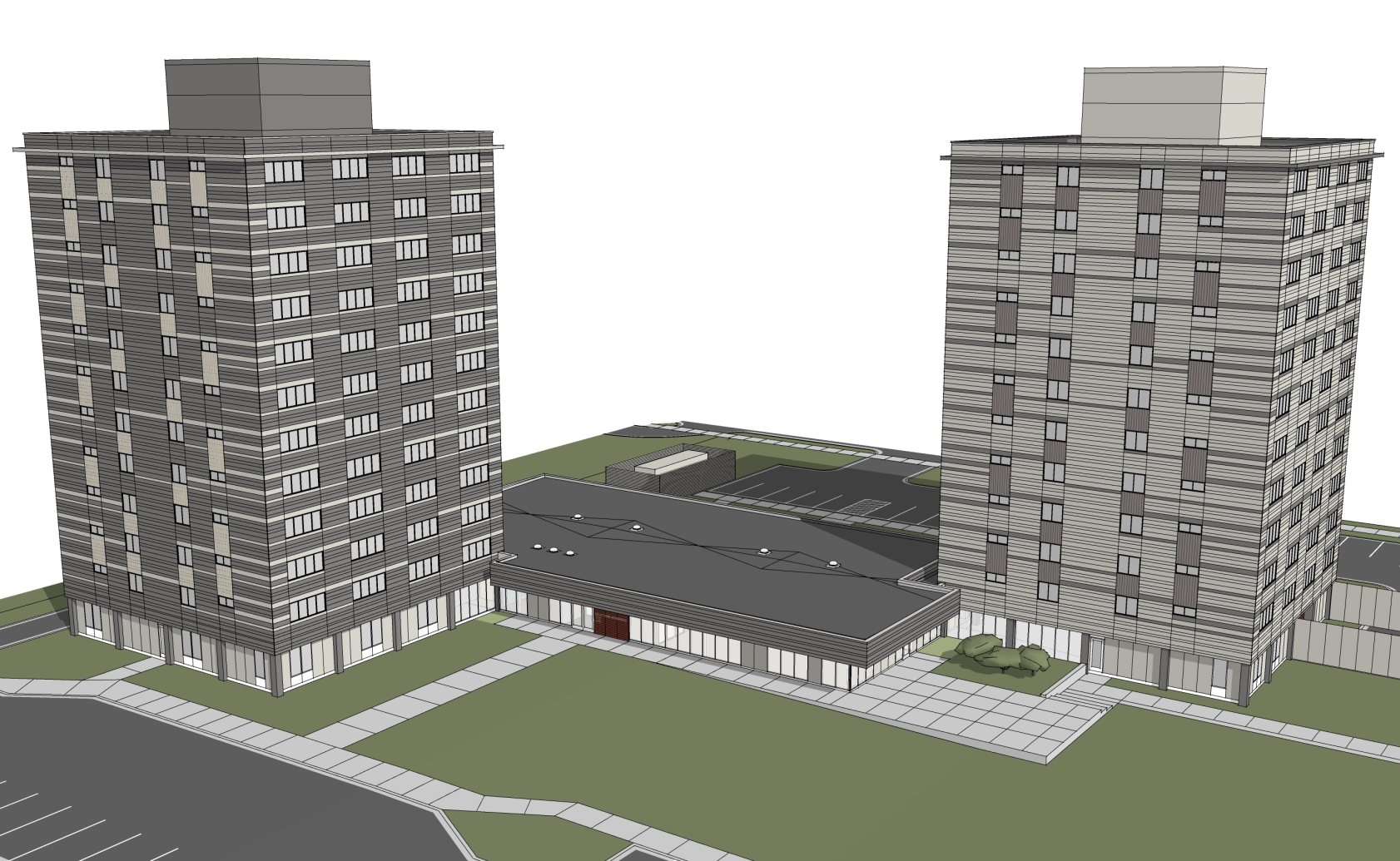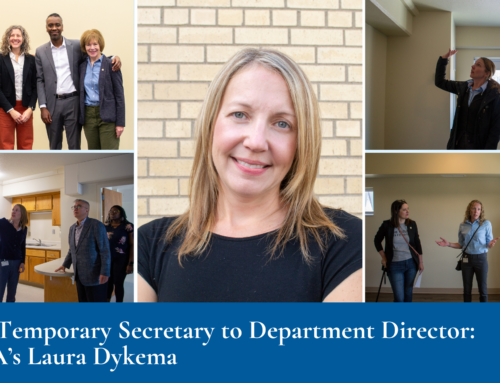June 15, 2020
MPHA and City of Minneapolis Launch City’s Largest-ever Public Housing Renovation
Towers built in 1961 will receive $25M in preservation and improvements
LEARN MORE | DOWNLOAD A PDF OVERVIEW OF THE PROJECT
**Media Questions about the Elliots? Email media@mplspha.org or call 612-201-0390**
MINNEAPOLIS—The Minneapolis Public Housing Authority (MPHA) has closed on the financing and will begin construction this month on a complete renovation of the Elliot Twins. At nearly 60 years old, the two towers in the Elliot Park neighborhood are among the oldest high-rise public housing in Minneapolis. The project will remodel the towers’ 174 units of existing public housing, add 10 fully disability-accessible units, replace outdated building systems, and add 6,200 feet of new ground-floor common areas and amenities. A $2.3 million investment by the City of Minneapolis will fund the use of energy-efficient materials and technologies, reducing energy costs by as much as 35 percent while increasing comfort for residents.
“With the Elliot Twins, we set off to fulfill our essential vision to preserve public housing across Minneapolis,” said MPHA Executive Director/CEO Abdi Warsame. “This extensive and attractive renovation will transform the lives of the people who live there. It will also embody our joint commitment with the city to invest in high-quality, long-lasting, appealing homes for our lowest-income citizens.”
The median household income at the Elliot Twins is around $10,200 a year. Nearly 80 percent of residents are seniors or have a disability; more than 80 percent are people of color. The buildings are home to many Somali elders. Residents are able to remain on-site throughout construction if they wish. Rent will remain affordable at 30 percent of adjusted income.
“Public housing sits at the base of our city’s commitment to permanent, affordable housing for everyone,” said Minneapolis Mayor Jacob Frey. “With the Elliot Twins, we won’t just be preserving essential housing for decades to come. We will be making it better. I am especially proud to show how energy efficiency can be a priority with even our most deeply affordable homes—reducing our carbon footprint and saving money that we can reinvest in preserving and creating more housing.”
The project includes complete apartment renovations, upgrades to major building systems (electrical, heat, water), addition of apartment air conditioning, fire sprinklers, new exterior insulated metal panels, and extensive landscaping. It features a 6,200 “community link” between the towers with large community spaces, expanded laundry and exercise rooms, and a single entrance with guard desk. Ten new ground and second floor units will be fully compliant with the Americans with Disabilities Act (the Elliots have only two such units today). The design is by LHB Architects; construction by Frerichs Construction will conclude in late-2021.
The estimated $25-million project is funded through the first use in Minnesota of state-of-the-art tools for preserving public housing. The units remain federally subsidized as Section 8 project-based vouchers. This provides a more stable funding stream and assures affordability, while unlocking financial investment from new partners, including State of Minnesota housing revenue bonds (allocated by Hennepin County), 4% Low-Income Housing Tax Credits issued by the City of Minneapolis with equity investment from RBC Capital Markets, long-term debt financing by Hunt Real Estate Capital, and a construction loan by Bremer Bank. MPHA will contribute approximately $5 million, property-manage the buildings, serve as the controlling general partner in the entity that co-owns the buildings, and continue to own outright the land that they sit on. Protections for current residents, as well as long-term affordability for the lowest-income renters, are guaranteed under multiple layers of federal law, the terms of the city investment, and long-term land-use restrictions including a 99-year ground lease.








